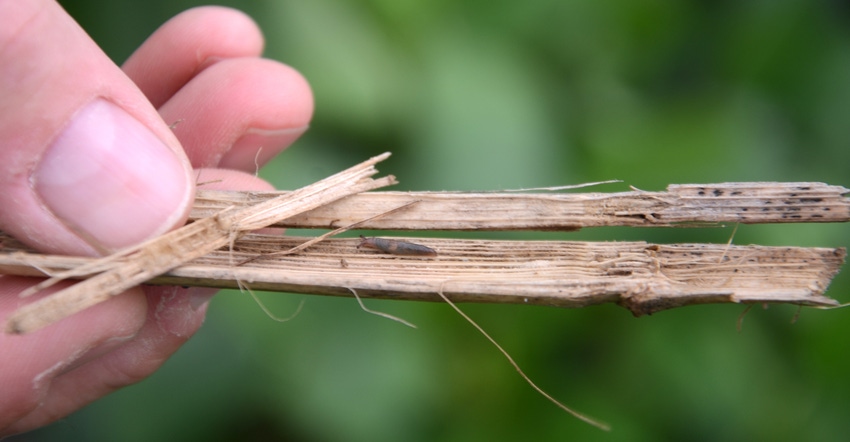
If you’ve never found a slug in your soybean fields or saw proof that slugs fed on your beans, consider yourself lucky. Steve Gauck says there are no good preventative or curative measures once slugs show up in a field.
“If the infestation is bad enough, it often means replanting the field,” says Gauck, a regional manager for Beck’s, sponsor of Soybean Watch ’21. “The best cure is for it to warm up and dry out. Slugs don’t like warmer, drier conditions.”
Related: Expect to find disease symptoms in wet year
Slugs were a major problem over a fairly large area of the eastern Corn Belt in 2017, and again in some areas this year. In the seasons in between, they caused sporadic stand loss in some fields that received more rain when it was still cool.
In fact, Gauck found them in the Soybean Watch field in 2017. They thinned out a section of the field, but the average stand was still 80,000 plants per acre or higher. “That’s enough plants to yield well,” Gauck says.
Despite being planted June 5 and receiving 6 inches of rain in one day in July that year, not unlike some fields this year, the field still made 50 bushels per acre.
“And we found slugs around the first of July that year in that field,” Gauck recalls.
Different year
The Soybean Watch ’21 field was planted May 15. Beans were no-tilled into cornstalks. There were some emergence problems, Gauck notes, but they were mostly related to beans pushing through hard soil after heavy rains.
“The grower worried about the stand early, but by early June, there was an average of 90,000 plants per acre,” Gauck says. “You’re not going to tear up a stand like that one.”
Gauck observed some slug feeding during his early June visit to the field. Slugs nabbed some plants, but they weren’t a major factor in emergence and early stand establishment.
“The big shock came when I returned to the field in mid-July,” he says. “By then the rows were filled in except for a few spots with vole damage. Plants were loaded with nodules and in good shape, despite receiving more rain than usual for that part of the country at that time of the year.
“The shock was turning over a piece of corn residue and finding a fat slug just resting there. You should not be able to find live slugs on the soil surface in a soybean field in mid-July.”
Maybe not in most years, but this year is already making a strong push to be out of the ordinary. “He was there because it was cooler under that residue and there was still plenty of moisture,” Gauck observes. “There were signs of a little feeding on leaves by slugs. But at that point in the season, it isn’t an issue for stands or yield. It’s just worth noting — an unusual sign of the season.”
About the Author(s)
You May Also Like




